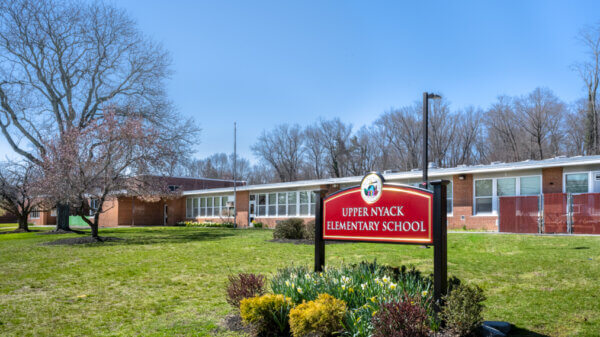by Dave Zornow
A Tappan Zee Bridge construction milestone was completed earlier this month. However, it’s not something that the thousands of motorists that cross the existing bridge each day will ever see. It’s located almost the length of a football field below the Hudson River.
The pilings for the piers that will support the two main towers of the new bridge are now in place. When the project is completed in 2018, more than 1,000 piles will be sunk in the riverbed to support the 43 piers on which the roadway will be built. The tower pilings were part of the project’s critical path – any delays in this task would have had a ripple effect on all subsequent construction activities.
 Construction crews drove the tower pilings 250 feet below the river bed to reach bedrock. This is 50 feet less than some of the longest piles that will be used to support other parts of the roadway. “Everything about this project is on a massive scale,” says Brian Conybeare, NYS Governor Andrew Cuomo’s special advisor for the Tappan Zee Bridge.
Construction crews drove the tower pilings 250 feet below the river bed to reach bedrock. This is 50 feet less than some of the longest piles that will be used to support other parts of the roadway. “Everything about this project is on a massive scale,” says Brian Conybeare, NYS Governor Andrew Cuomo’s special advisor for the Tappan Zee Bridge.
In addition to its size, the project’s location adds to the complexity of the job. “Anything you do on the water is a challenge,” says NYS Thruway Construction Compliance Engineer Tom McGuiness. “You need to plan your moves. You can’t just walk up to the site. You need to rely on the boats to move your workforce. If you forgot something its not a matter of just walking back to get it — you need to schedule everything,” he says.
The individual piles are hollow pipes of various sizes, lengths and thickness. “They are round, the diameters vary, the wall thickness varies, but essentially it’s one big pipe,” says McGuiness. “The piles vary from 3 – 6 feet in diameter and are from 100 – 300 feet in length.” Each piling consists of two sections welded together on site, in place, on the Hudson River. Typically the first section is vibrated into place to a depth of 150 – 180 feet, covering about 100 feet every 15-20 minutes depending on the soil conditions. Pile driving is then used to move each pile into its final position. The new bridge requires 43 approach spans to support the roadway, each of which rests on from 11 – 64 separate pilings. A complete set of pilings for a span takes three to four weeks to complete. As of June 2014, about 20% of the required piles have been installed.
Conybeare says that the project has now entered a new phase called pile cleanout. “Because the piles are open ended, when we drive them into the ground, the soil from the river bottom migrates up into the pile and plugs it up,” says Tappan Zee Constructors Deputy Project Manager Larry Owens. “Before we can pour in the concrete, we need to clean that out.” A modified clamshell bucket called a Caisson Grab is used to scoop out the sediment in each piling. Owens says that after the tower pilings have been cleaned out, they will be filled with concrete and reinforcing steel. The Tappan Zee Constructors design team says that the pilings for the new bridge are designed to last 100 years.
Our Aquarium On The Hudson
If you own a home aquarium, some of the things the TZB crews are doing may sound familiar, like aerating the water and lining the bottom with gravel. But their work is on a massive scale and for a different purpose than the maintenance you might do at home for your goldfish.
Last year, 844,000 cubic yards of mud were dredged from the Hudson River for the Tappan Zee Bridge project. Beginning this spring, crews will start to “armor the channel,” filling the dredged channel. Motorists on the bridge may have seen the floating platform used for this task, equipped with a conveyor belt and a chute. By lining the channel with rock, larger marine equipment can be used without kicking up silt which reduces the water quality and poses a hazard marine life who call the Hudson their home.
Bubble Curtains are another fish-friendly feature of bridge construction. During pile driving, compressed air is forced through a set of rings that encircled the pile to reduce the impact of sound waves created by the pile driving.
River dredging will start up again on August 1 and conclude by October 31 before the season when the Atlantic Sturgeon spawn and migrate.








